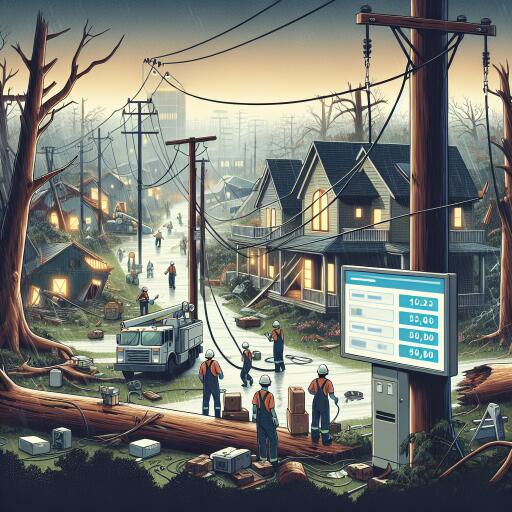
Duke Energy Florida Advances Power Restoration in Hurricane Milton Aftermath
In the wake of Hurricane Milton’s devastating impact, Duke Energy Florida is diligently working to restore power to affected areas. The number of outages has significantly decreased from over 1 million to approximately 580,000 as of Saturday, October 12.
The energy company has provided estimated restoration timelines for storm-impacted customers who are ready to receive power. Restoration efforts in Brevard, Citrus, Hernando, Highlands, Lake, Marion, Orange, Osceola, Polk, Seminole, Sumter, and Volusia counties are expected to be completed by 11:59 p.m. ET on Sunday, October 13. Meanwhile, power is expected to be restored to customers in Pinellas and Pasco counties by 11:59 p.m. ET on Tuesday, October 15.
“Hurricane Milton has wrought significant damage across our state, leaving millions without electricity,” stated Todd Fountain, Duke Energy Florida’s storm director. “Despite the progress we’ve made in such a short time, our mission to restore power to every customer remains steadfast.”
For customers who have experienced severe damage or flooding, additional restoration time may be necessary, and they should prepare for longer outages. Duke Energy will provide updates as they become available.
Customers unable to receive power due to damage to meter bases, breaker panels, or customer-owned electrical wiring are advised to contact their local authorities for guidance. Post-repair inspections are likely required.
Methods to Report Power Outages:
- Visit the Duke Energy website on a desktop or mobile device.
- Use the Duke Energy mobile app.
- Send a text message with the word OUT to 57801 (standard message and data rates may apply).
- Call the automated outage reporting line at 800-228-8485.
For the most current information on power outages, customers can access the Duke Energy Outage Map or sign up for Outage Alerts.
About Duke Energy Florida
Duke Energy Florida, part of the broader Duke Energy network, manages 12,300 megawatts of energy capacity and supplies electricity to 2 million customers within a 13,000-square-mile region of Florida.
About Duke Energy
Ranked among America’s largest energy holding companies, Duke Energy is headquartered in Charlotte, North Carolina. It serves 8.4 million customers across North Carolina, South Carolina, Florida, Indiana, Ohio, and Kentucky, with a collective energy capacity of 54,800 megawatts.
As part of its commitment to a clean energy future, Duke Energy is focused on reducing methane emissions from its natural gas operations to net-zero by 2030 and achieving net-zero carbon emissions from electricity generation by 2050. This progression involves significant investments in grid upgrades and cleaner energy sources, including renewables, nuclear power, natural gas, and expanded energy storage options.
Duke Energy remains committed to providing reliable, affordable, and accessible energy as it embarks on this transformative journey toward sustainable power solutions.





Leave a Reply